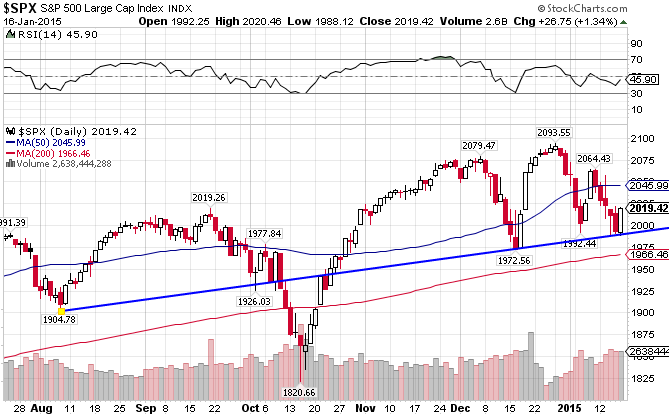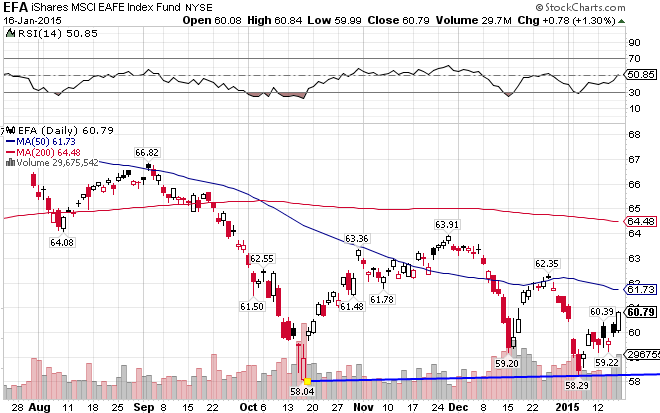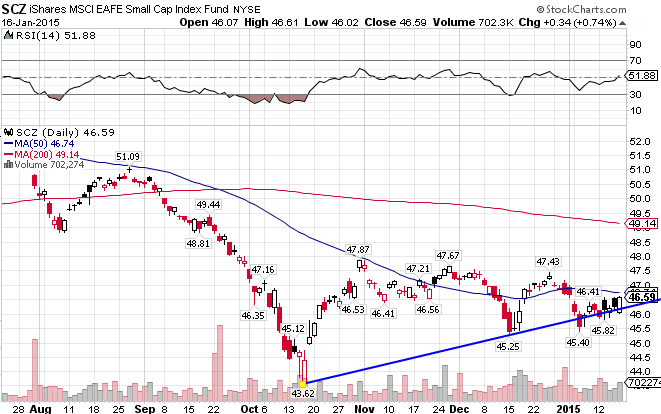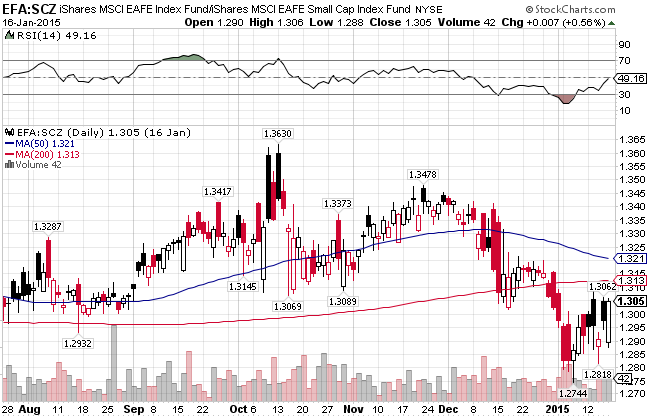After breaking through both moving averages in October, the S&P 500 Cap-Weighted Index ((IVV) recovered to new all-time highs in a matter of weeks. Despite the impressive feat, it appears that the market is tiring, falling hard in the week as the VIX index spiked. The S&P 500 is down 1.87% for the year.
The S&P 500 Equal-Weighted index ((RSP)) is set up so that every stock in the index has the same weight, thereby eliminating market-weighting’s growth bias. As a result, the index tilts more towards mid-cap and value stocks, which accounts for much of the out-performance versus the cap-weighted index in the last decade. The index is down 2.32% year-to-date, slightly behind the cap-weighted index.
One of the themes for the past few years has been growth-oriented, smaller cap stocks outperforming high quality, blue chip stocks. That has not been the case this year, as the Russell 2000 Small Cap Index ((IWM)) is down 2.44% YTD. After years of investors disregarding risk in favor of returns, this index is now taking it to the chin. Low quality or speculative smaller-cap stocks tend to lead the market near the end of a bull phase. We’ll keep an eye on this.
The S&P 500 versus the Russell 2000 Index. The Large Cap Index has underperformed since October, but is headed to support.
Unlike the US markets, the MSCI EAFE Index ((EFA)) has staggered and stumbled throughout the past year, and now finds itself below both moving averages. The index is down only 0.08% since the beginning of the year, significantly better than its US counterpart.
The MSCI EAFE Small Cap ((SCZ)) has performed negligibly worse, with a YTD loss of 0.26%. On par with the US markets, in the short-term international small caps are underperforming the large cap index.
EAFE Large Cap Index vs EAFE Small Cap Index. It’s been a steady large cap outperformance until December of 2014, when it reversed quite decisively.








Stay In Touch